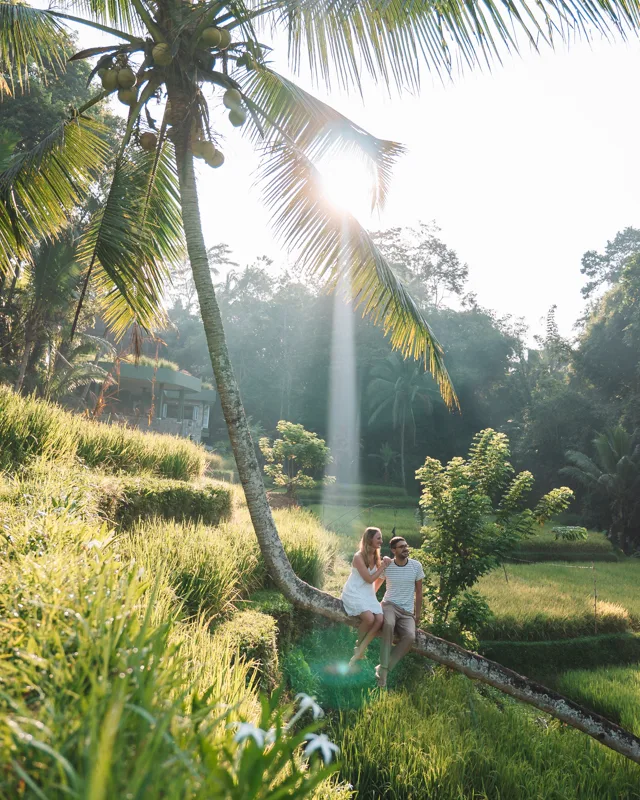
Are you planning your first trip to Bali? Congratulations! This island has something to offer for everyone: waterfalls, beaches, volcanoes, rich culture, good food. The
Welcome to the world of Raja Ampat, a tropical paradise located in Indonesia that is sure to take your breath away. With its crystal-clear waters, vibrant marine life, and stunning coral reefs, Raja Ampat is a destination that will captivate you from the moment you arrive.
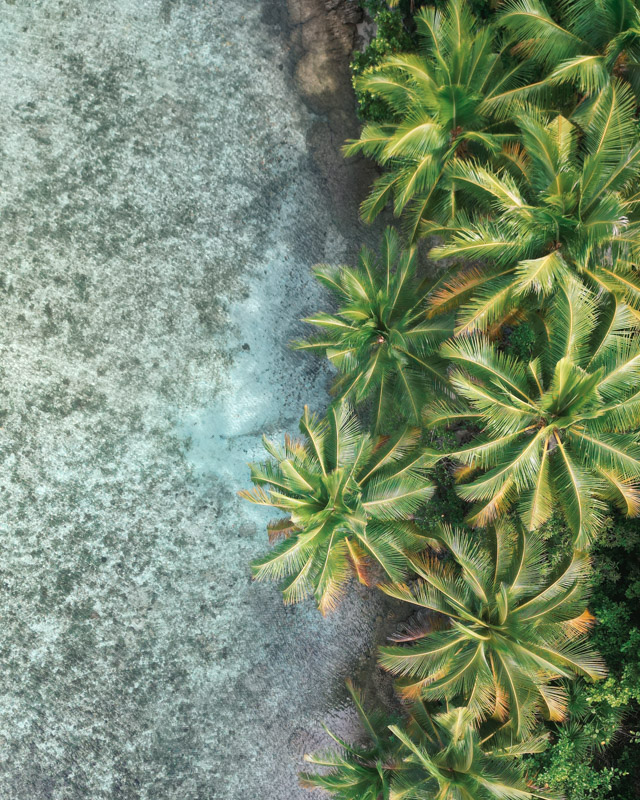
Raja Ampat, located in the West Papua province of Indonesia, is a hidden gem that boasts some of the most spectacular natural wonders on earth. This cluster of islands has long been known for its stunning coral reefs, vibrant marine life, and crystal-clear waters. However, it’s not just the underwater world that makes Raja Ampat such a unique destination. Its rich culture, traditions, and customs add to its charm, making it a must-visit place for any traveler.
The waters surrounding Raja Ampat are home to over 600 species of coral, 1500 species of fish, and four species of sea turtles. This diversity is unmatched anywhere else in the world, making it a haven for marine biologists, photographers, and scuba divers.
Raja Ampat is one of the last remaining areas on earth that has not been affected by human activity. The environment is pristine, and the natural beauty is breathtaking. You can explore the untouched rainforests, go birdwatching, or hike through the lush green hills.

One thing in advance: the journey to Raja Ampat is long and a bit tedious. There are no direct flights from Bali. They are only available from Jakarta or Surabaya.
If you want to travel from Bali to Raja Ampat, you have to fly via Makassar (Ujang Padang) on Sulawesi. Flights are usually in the afternoon and last 1h 15min. Our flight was unfortunately delayed for over 2.5h, but since the transit in Makassar is long, this was not a big deal. Flights from Makassar to Sorong in Papua usually leave at night, so be prepared for a short night.
If you don’t want to spend the 7-8h stay in the airport of Makassar, which we also can’t recommend, then the Ibis Budget directly at the terminal is worth considering. The rooms are small and noisy, but the location is ideal and the bed is also good to have at least 3-4 hours of restful sleep.
The flight from Makassar to Sorong again takes 2 hours and at the exit of the airport, you expect extremely many drivers who want to take you to the port. The price is non-negotiable and is always 100,000 IDR (about 6.20€). We walked out of the airport and ordered a gojek for only 32,000 IDR. Unfortunately, the other drivers overheard this and hemmed in our driver and harassed him extremely. This was our first really unpleasant experience with gojek. We then walked out of sight of the drivers and waited on the side of the road, where we were lucky and a really nice family gave us a free ride.
Once at the port of Sorong, you can buy tickets to Waisai at the counter for IDR 125,000 (about €7.70 per person each way). But you can save the double price for the VIP category. The ticket purchase was very easy and the boat trip takes 2 hours. The ferries leave 2x a day, once at 9 am and once at 2 pm.

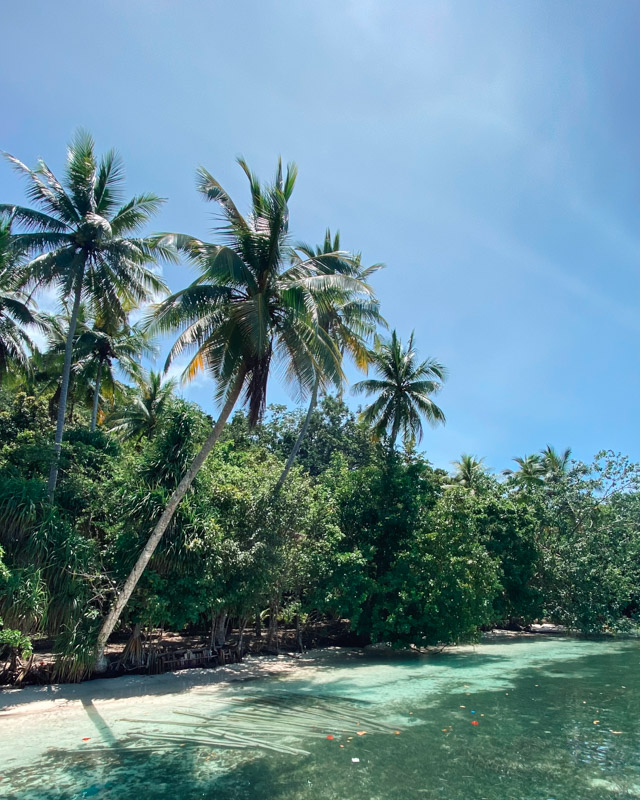
In Waisai you actually have to pay 300,000 IDR (approx. 18.50€) per person for the entrance fee to Raja Ampat. But there was no one there because it was Sunday and we didn’t have to pay anything. In addition, you have to pay 700.000 IDR (ca. 43,20€) per person for the Marine Card if you want to dive. The money is used for environmental protection. This is not really taken seriously by the tourism office.
The office of the authority is a 10-minute scooter ride away. Although we had previously contacted the employees there via WhatsApp, the office was closed and no other travelers were there either. So we had to leave again without our Marine Card. If your dive center is conscientious, they will charge you the amount. We were happy to pay the fee because we know that it is really used to conserve Raja Ampat.
Back at the harbor, the owner of our first homestay was already waiting for us. It’s best to check with your homestay beforehand about the pickup. We were able to share the boat with another couple and thus only paid IDR 200,000 (approx. 12.30€) per person for the one-hour trip, instead of IDR 700,000-800,000, which is what a boat transfer usually costs.
If you need to stay overnight in Sorong, we can recommend the Favehotel Sorong. It is only 3 minutes from the airport and has a comfortable bed and a hot shower. The breakfast is nothing special and be sure to ask for a room as far back from the main road as possible. Alternatively, the Swissotel is definitely a good, if slightly more expensive alternative.
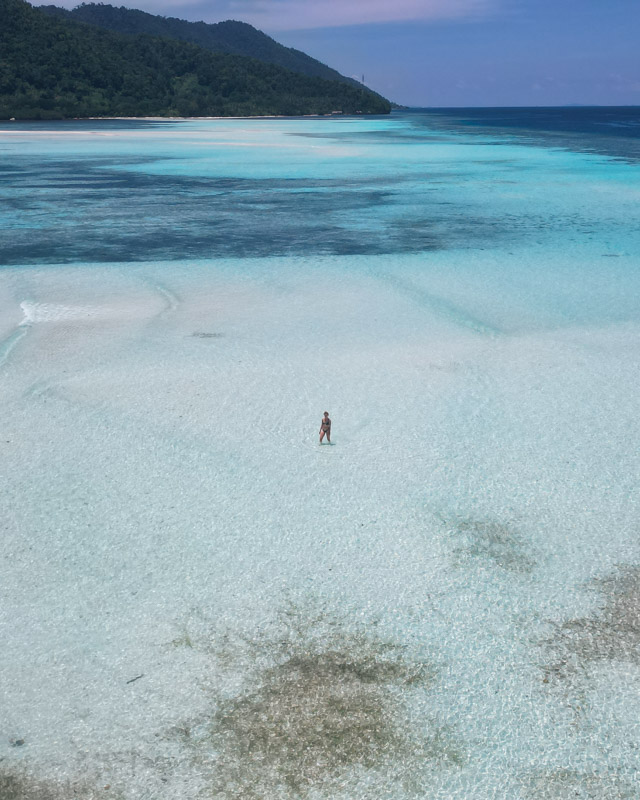

When traveling to Raja Ampat, try to book early as there aren’t many hotels and the get reserved quickly. Most of the accommodations are very simple. So you have electricity only from the evening (usually around 6 pm until 6 am) and often no running water. Electricity, for example, is only produced by generators. Accordingly, all accommodations have neither air conditioning nor wifi. Therefore our tip: buy a sim card from Telkomsel, so that you have mobile data. Remember to tell them that you want to use the card in Raja Ampat and not in Bali/Jakarta/etc. because the mobile data is region specific.
Also, often you don’t have a toilet in your room, just a communal outhouse and shower for everyone. Be sure to take disinfectant with you, as the toilets are often not very clean and there is often no soap available. The food is included in most accommodations or you have to book it for about 12€ per person and day. It is often not very varied, because there is almost always rice with vegetables and chicken or fish. But most of the time it is really tasty because it is real local food with local ingredients.
We booked the other homestays two months in advance. Since our plans changed a bit, we had one more night at Kri. There was not much available so we booked the Mambetron. It is a very basic setup. You get a bungalow right on the beach with a bed, shower, and toilet. Electricity is only available from 6 pm via a generator. The food was not bad, but communication with the hosts was a bit difficult. We paid 28€ p.p. including 3 meals.
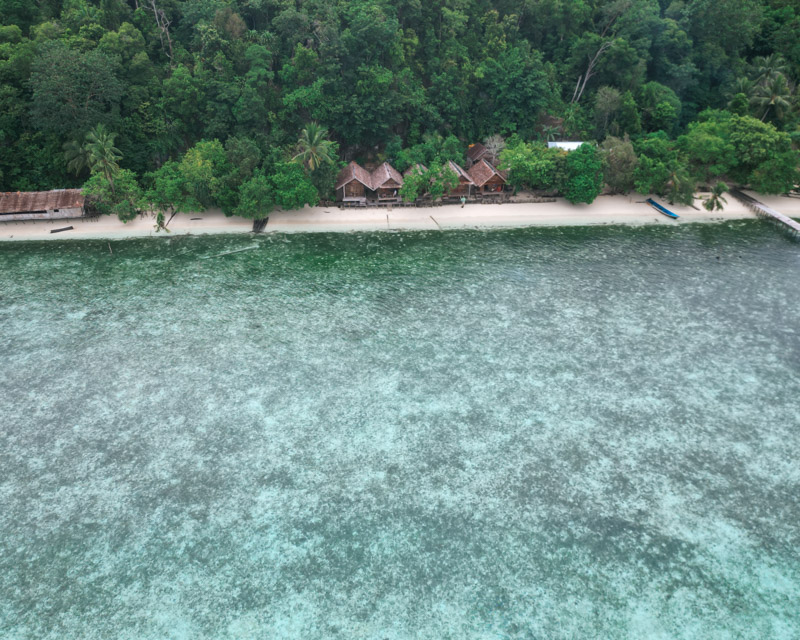


At Nus Homestay we had an overwater bungalow with a terrace. We paid 31€ per person including all meals. The food was delicious and varied. It was served in a community kitchen in buffet form, so you can easily come into contact with other travelers. The bungalow is extremely spartanly furnished. Actually, it consists only of a bed with a fly screen. The mattress and pillows were unfortunately very uncomfortable. After we left the Nus it was closed for 3 days for renovation work. What was renovated, we can not judge.
The location directly on the reef and on a sandbar is outstanding. You feel like you are in the South Seas or the Maldives and can go snorkeling directly from your bungalow into the water.
The Soul Scuba Diving School is also only 50m away, which we can recommend without reservation.
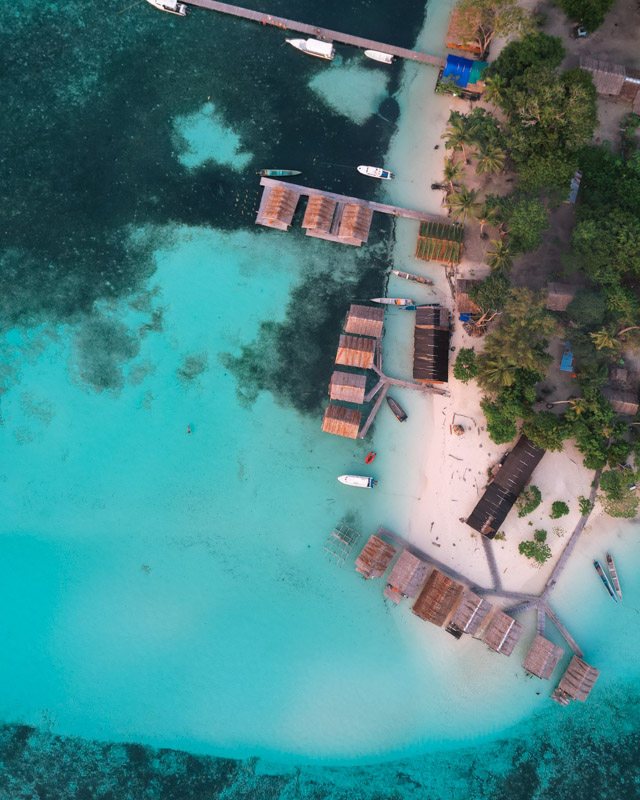
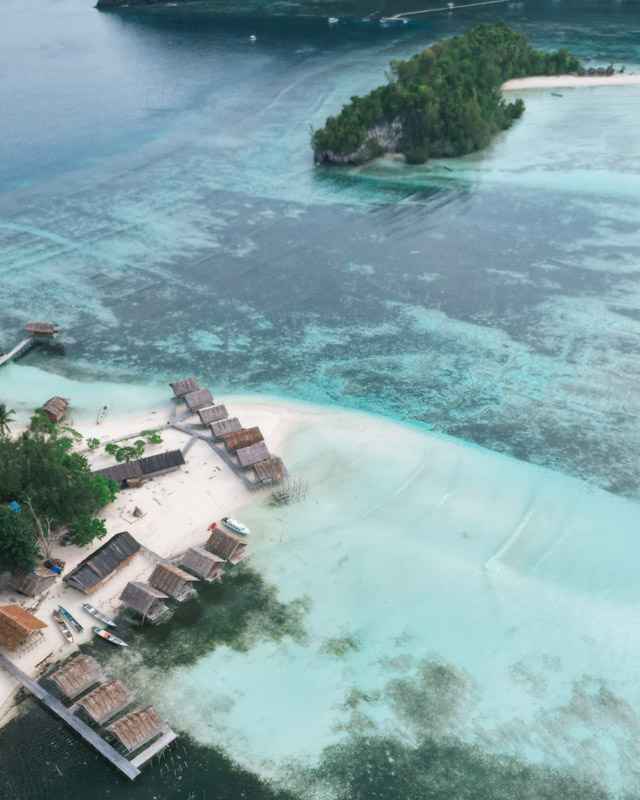
Methos Homestay is located on Gam, more or less opposite Mansuar. The bungalows are just great. They are large, clean and have a comfortable bed, which we desperately needed after our 4 nights before. In addition, each bungalow has a huge terrace with a hammock and sun lounger. You can go from here directly into the sea via its own stairs for swimming and snorkeling.
The bungalows are a bit more expensive but are definitely worth it at 36€ per person per night. Again, 3 meals per day are included. The food is brought directly to your bungalow and you can enjoy it on your own terrace overlooking the sea. If you’re bored with rice (no sauce), ask for kecap manis, a delicious soy-like sauce made from black beans. On the second day we had lunch we saw 4 dolphins swim by about 100 meters away.
Just a good 5-minute walk away are two small villages where the children are always happy to see you. There is also a small store with snacks, soft drinks, and even beer. You can also cool your drinks in the Methos kitchen. It’s just really always a nice experience to get in touch with locals.
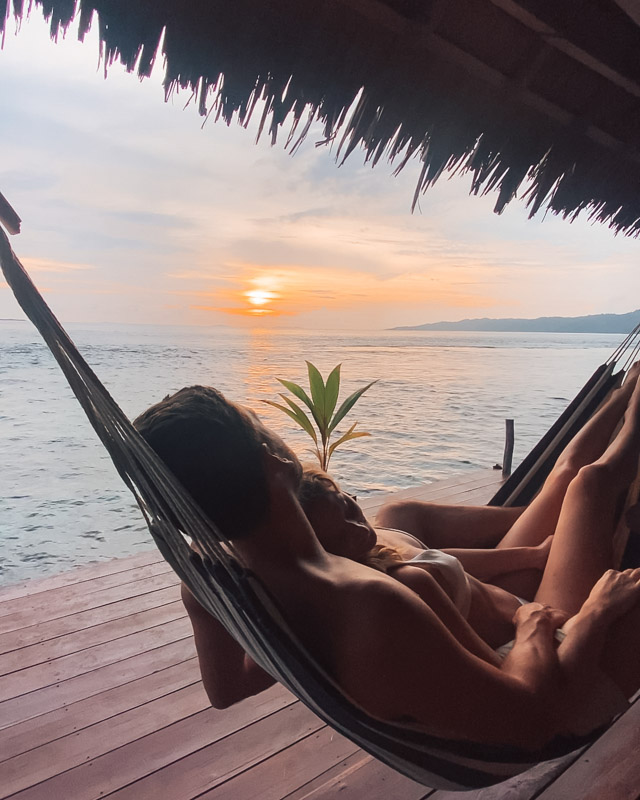
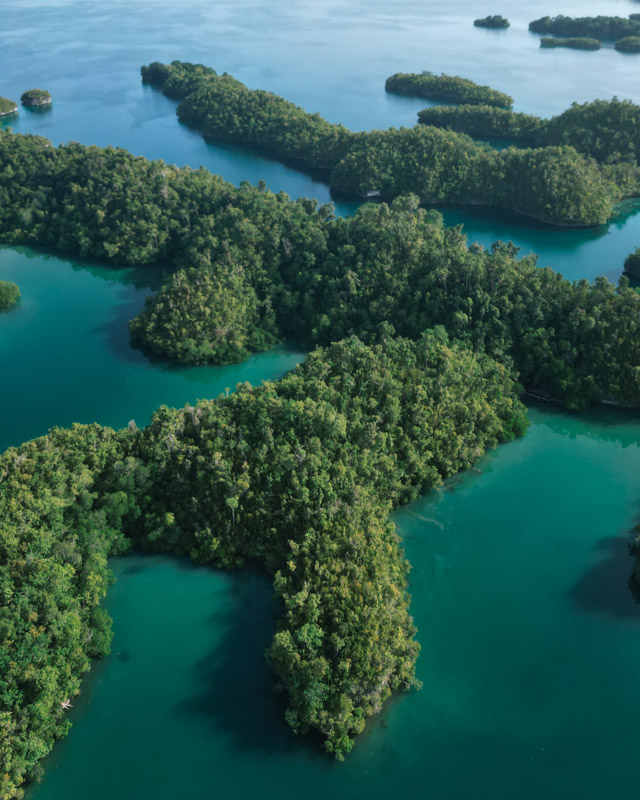
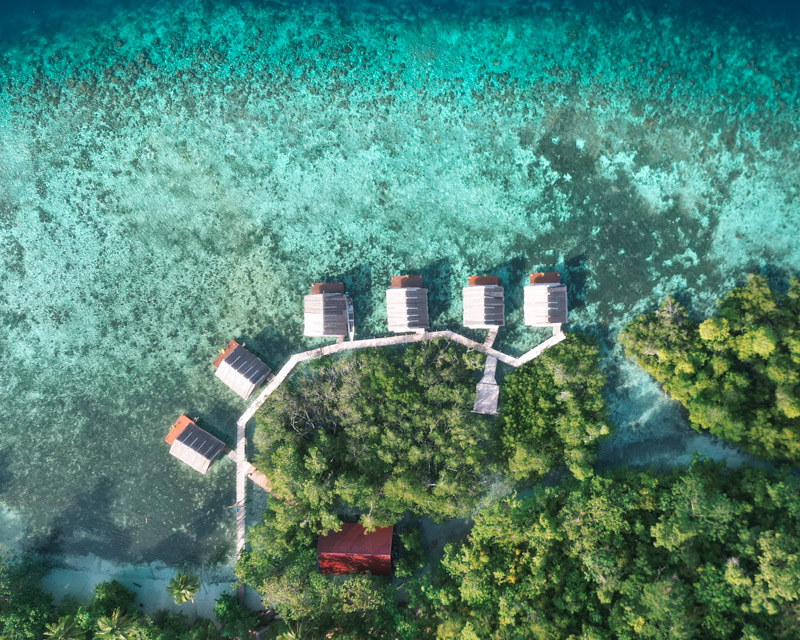
Our last stop for 4 nights was on Mansuar at Frances Homestay. We paid just under 32€ per person per night including three meals a day. At Frances Homestay we had actually booked 5 nights. Unfortunately, one week before our departure, our flight was moved forward by almost 4 hours to 11 o’clock. So it was no longer possible for us to spend the last night at the Frances and we had to stay in Sorong instead. The Frances consists of only 3 bungalows, the left 2 being much newer. The third is closer to the mainland and is older.
We were able to switch to the bungalow in the very front after our first night in that one. They are similar to the Methos spacious with comfortable beds and large terraces, but not to the same standard. Unlike previous homestays, the Frances is located right in a small village, which makes it noisier. We paid 32€ per person per night here including 3 meals a day.
The food was unfortunately not very varied, there were 2x fish with rice and vegetables per day. We had the feeling that it can not compete with the other two accommodations in terms of food and location (Nus) or accommodation (Methos). In the village, you can buy some sweets and soft drinks if you want some variety.


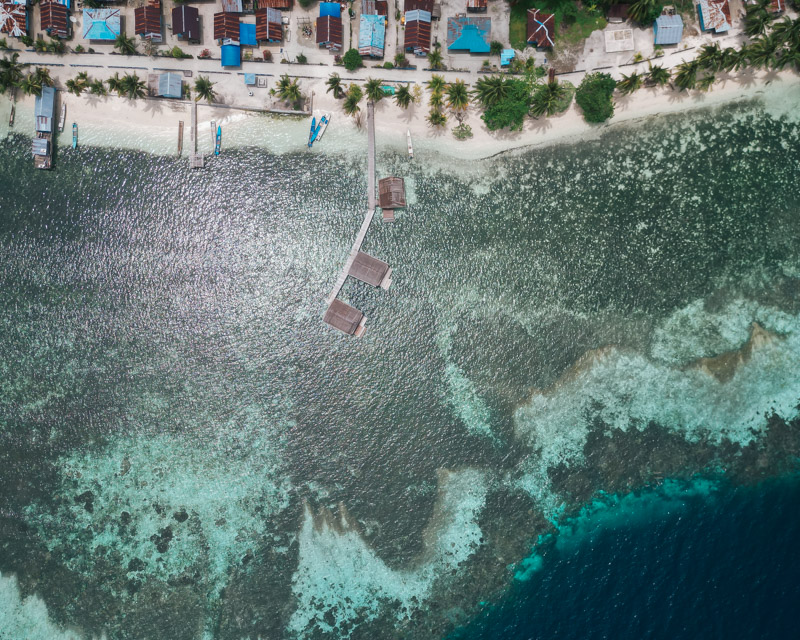


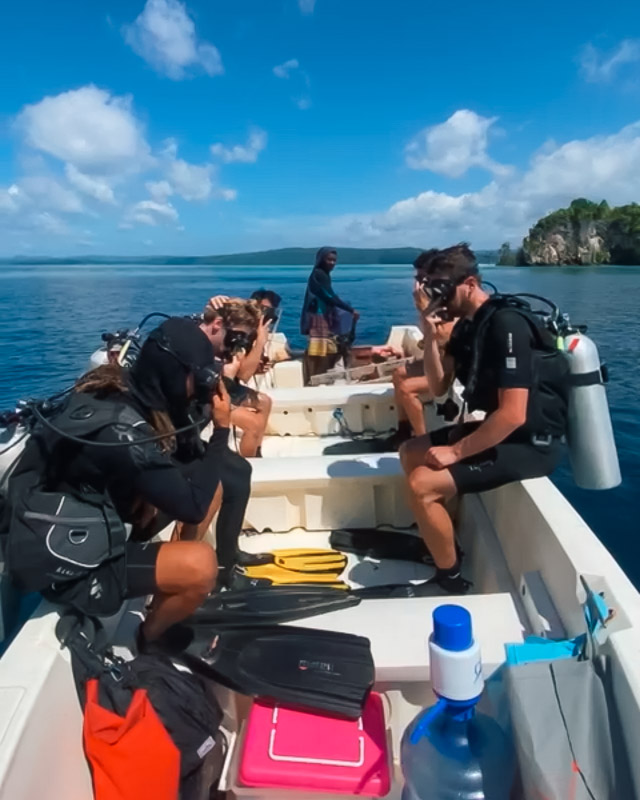

On our second to last full day we went to the Piyanemo lookout. The weather didn’t bode well because we were woken up by a thunderstorm at 4am. We left anyway and did 2 dives first. Again, the coral gardens and the countless fish are breathtaking and that despite the rain and not too good visibility.
After lunch, the homestay gave us a lunch box on request, we went on to the viewpoint. Unfortunately, it was raining cats and dogs and we had to walk the good 300 steps in the rain to the top.
Fun fact: the view over the lagoon is even depicted on one side of the 100,000 rupee note, which the inhabitants of the surrounding villages consider a great honor. It is also supposed to have a signal effect so that the locals appreciate and conserve the paradise on their doorstep. You can guess how beautiful it is when the sun is shining, but even when it was raining, the view was magical.

Wayag is a breathtakingly beautiful group of islands located in the Raja Ampat archipelago in Indonesia.
Wayag is particularly famous for its iconic limestone karsts, which form a picturesque landscape of towering rock formations surrounded by crystal-clear waters. The view from the top of the karsts is truly spectacular, offering panoramic vistas of the surrounding islands and lagoons.
There is a shark point which is outstanding. Also, it’s possible to camp with a guide on a remote island at Wayaq on a remote island.
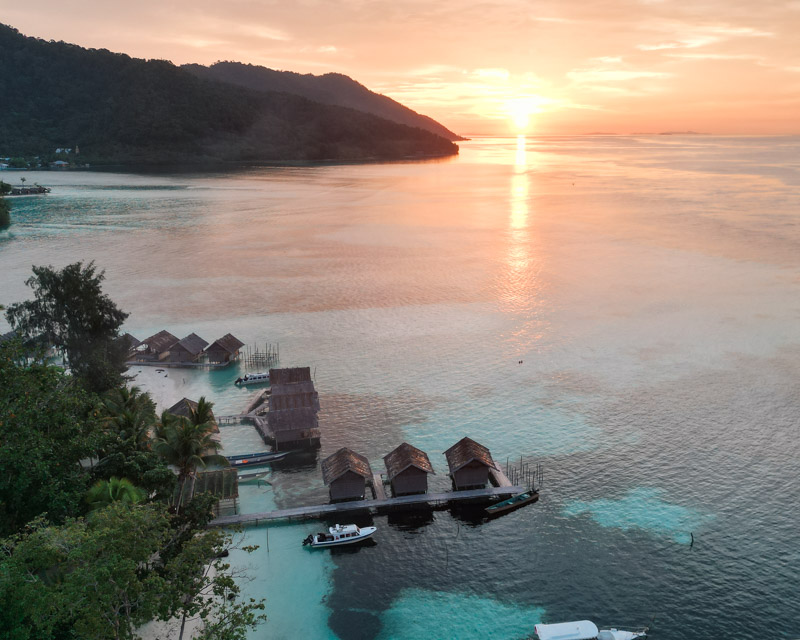
Blogging costs time and money. Do you want to value our work? We appreciate a tip in our virtual coffee fund at PayPal, so we can keep our website running.
Then these platforms might help you. We use them for all our travels and if you use them, too by clicking the link we earn a small fee. Yet, you don’t pay extra, but we can keep this site running. Win-win!

Are you planning your first trip to Bali? Congratulations! This island has something to offer for everyone: waterfalls, beaches, volcanoes, rich culture, good food. The

Java, the most populous island in Indonesia, is a treasure trove of breathtaking landscapes, rich cultural heritage, and vibrant city life. An 8-day tour in
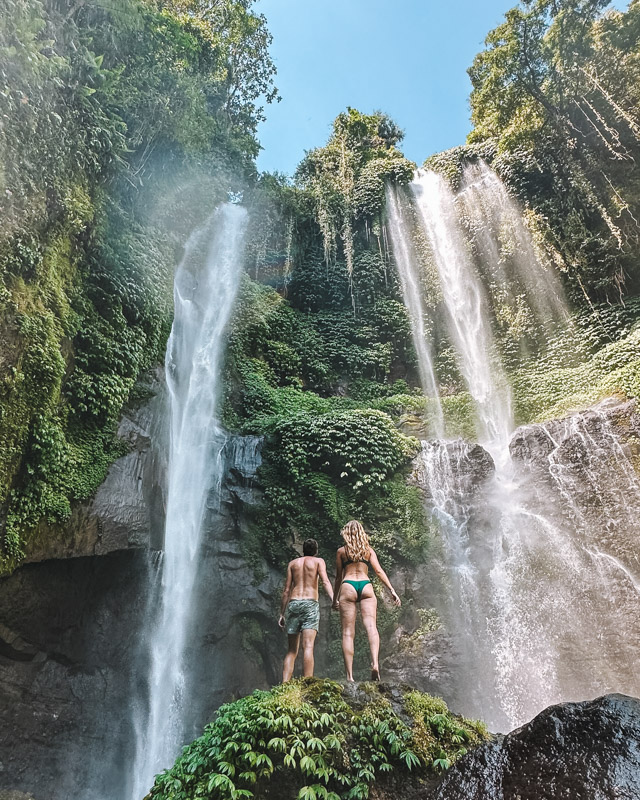
Bali, known as the „Island of the Gods,“ is a tropical paradise renowned for its stunning landscapes and vibrant culture. Among its many natural wonders,